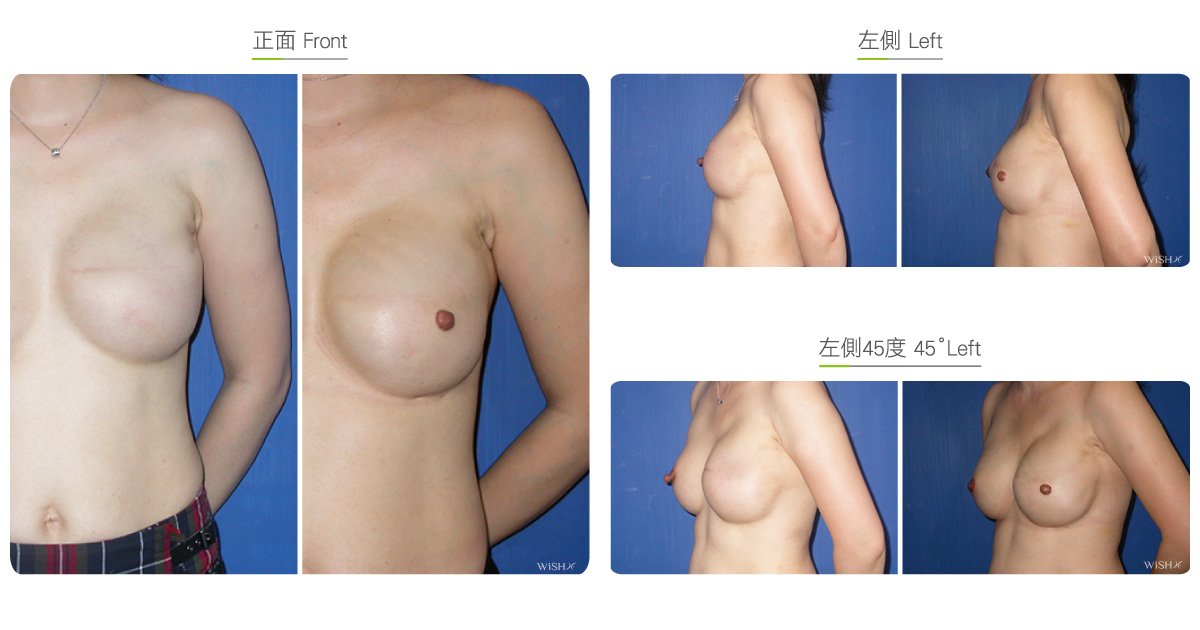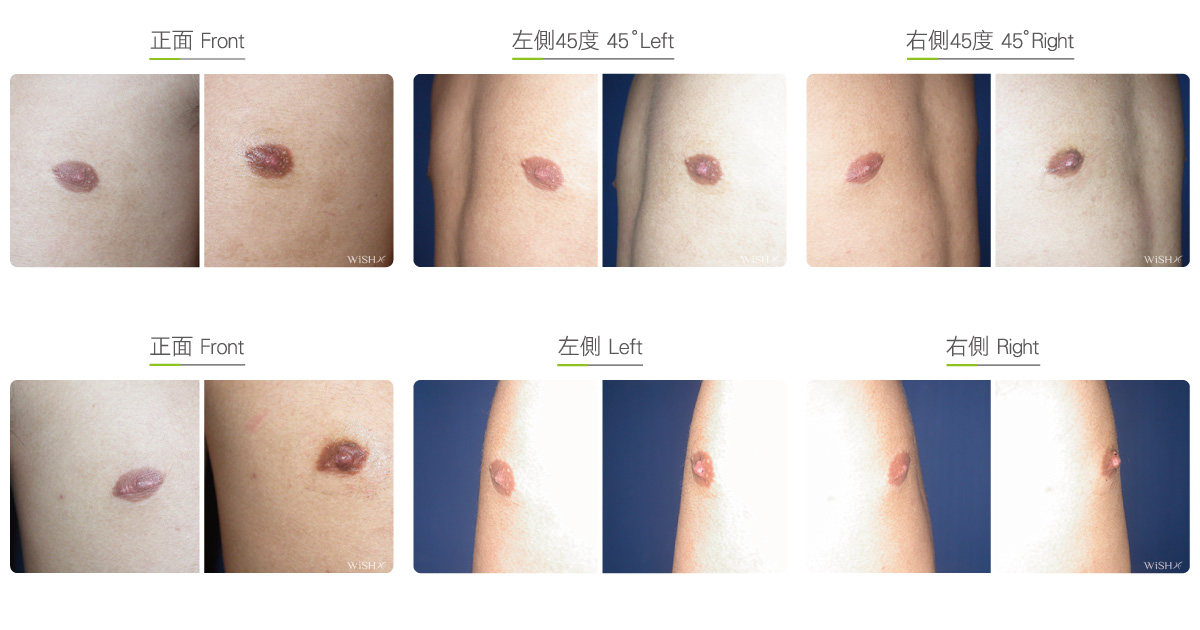Nipple Reconstruction
The reasons for nipple reconstruction include, most commonly, mastectomy, nipple defects due to breast trauma, or the disappearance of the nipples due to previously failed nipple surgeries. Majority of the patients undergoing surgery are females, with a 9:1 female:male ratio. There are many choices with regard to the method of reconstruction, and the surgeon provides recommendations depending on the gender, cause of the disease, patient’s condition, and status of the nipple. Currently, Dr. Chuang offers the following surgeries:
- Free Nipple Graft: It is the most common procedure of nipple reconstruction for mastectomy patients and is ideal for those with thin or tight chest skin. During the procedure, a partial nipple from a normal breast is harvested and transplanted to the affected side. The skin from the areola or even pudendum can be used at the same time to reconstruct the areola. The advantages of this surgery include similarity in skin color compared with that in the normal side, natural look, and soft texture, similar to a real nipple. Some of the disadvantages include that the surgical result may be limited by the extent of useable tissue on the contralateral nipple and that the transplanted nipple may experience atrophy or necrosis due to the blockage of recipient blood supply.
- CV Flap: This surgery can directly make local skin to create the shape of the nipple or could be combined with a costal cartilage transplant to support the nipple. The areolae can be reconstructed through periareolar tattooing or pudendum skin transplant after the nipple wound heals. This method is advantageous in that the contralateral nipple does not need to be harvested. However, the disadvantage is that it is restricted by the skin tension and elasticity of the affected breast. It is not suitable for patients with tight chest skin, cicatricial scarring, huge implant reconstruction, and poor skin elasticity due to radiotherapy. The surgery would be more complex when combined with a costal cartilage transplant. The other disadvantage is that the reconstructed nipple lacks normal color and would require tattooing. Currently, this surgery is mostly applied for patients undergoing immediate breast reconstruction with autologous tissues, but it is less commonly chosen by patients with second reconstructions using breast implants.
- Free Cartilage Graft: This is the main procedure of reconstruction after nipple trauma or failed surgery. Two or four micro-incisions are made at the base of the nipple. Then, an autologous cartilage taken from the ear or rib can be shaped and placed into the nipple. Nowadays, one can also choose from legally donated costal cartilage for transplant if autologous tissue is unavailable. Lastly, making annular stitches at the base of the nipple to secure the cartilage completes the surgery. The advantages of this method include small incisions, quick recovery, and the partial preservation of nipple sensation. The disadvantages include problems of absorption due to the use of autologous/heterologous cartilages, less effective result for those with severe nipple defects, and possible complications such as skin necrosis due to poor nipple circulation.
Surgical coditions
Duration
0.5hr
- Type of anesthesia: IV sedation + local anesthesia
- Type of incision: Ipsilateral skin, contralateral nipple or areola
- Recovery: Within 2–3 days
- Removal of stitches: 7–10 days
General instructions
No food and water on the day of surgery
0hr
- Smoking and alcohol consumption should be avoided for 3 months postoperatively.
- The nipples should not be rubbed, and tight clothes that could compress the nipple should be avoided.
Ideal candidates
- Those who lost a nipple due to major thoracic surgery.
- Those at the final stage of breast reconstruction.
- Those with defective nipples due to trauma.
- Those who have a flat nipple due to a previously failed surgery.
Possible complications
- Poor flap circulation
- Nipple necrosis or atrophy
- Cartilage absorption
- Unsatisfactory results
Surgical advantages
-
Allows better projection of a defective nipple.
-
Conceals part of the scars from mastectomy.
-
Recreates a representative female sexual characteristic.
-
Restores the appearance of a normal nipple.
Surgical drawbacks
-
Possible complications such as nipple atrophy or necrosis.
-
The result is dependent on individual skin tension and elasticity.
-
The grafted nipple does not have sensation.
Possible procedures in conjunction
Before & After
These photographs represent typical results, but not everyone who undergoes plastic surgery will achieve the same.


